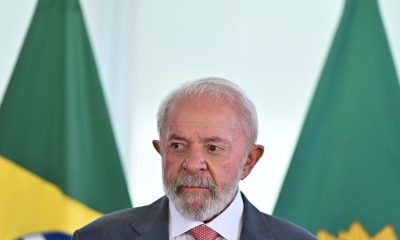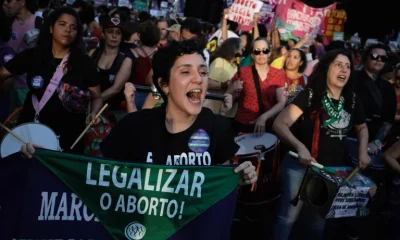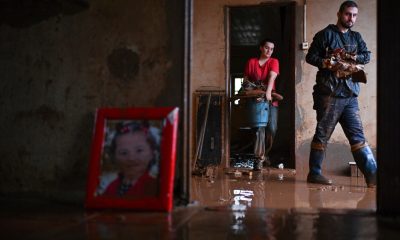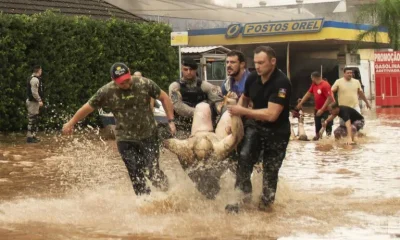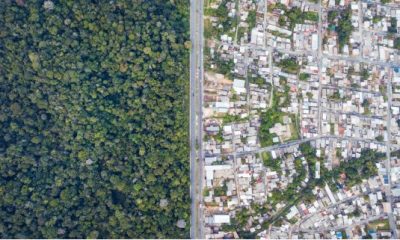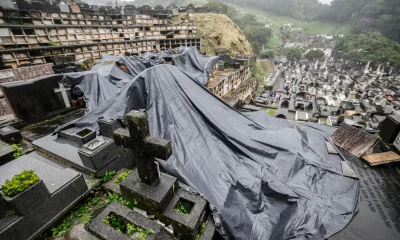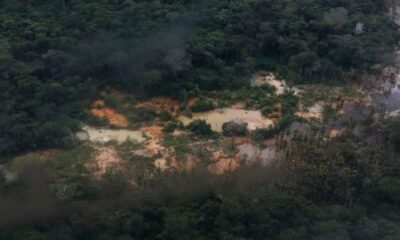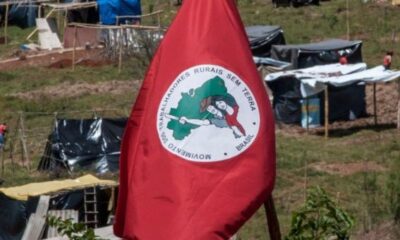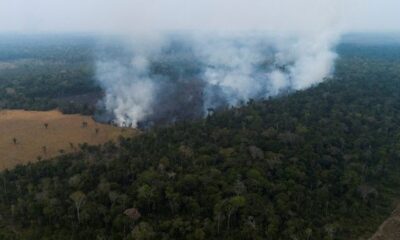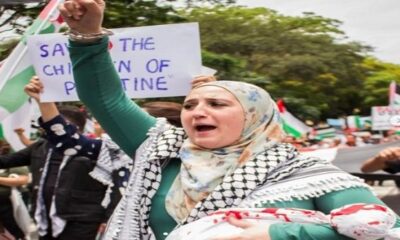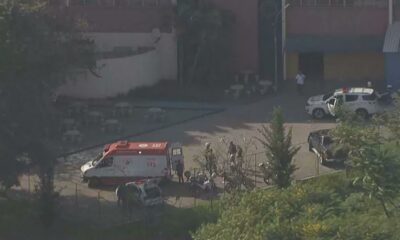International
‘Progress destroying nature’: Brazil dam fuels fears for river

| By AFP | Carlos Fabal with Joshua Howat Berger in Rio de Janeiro |
Holding a dead fish, Junior Pereira looks grimly at a puddle that used to be part of Brazil’s Xingu river, a mighty Amazon tributary that has been desiccated here by the massive Belo Monte hydroelectric dam.
Pereira, a member of the Pupekuri Indigenous group, chokes up talking about the impact of Belo Monte, the world’s fourth-biggest hydroelectric complex, which locals say is killing one of the most biodiverse regions on Earth and forcing them to abandon their way of life.
“Our culture is fishing, it’s the river. We’ve always lived on what the river provides,” says Pereira, 39, who looks like a man trapped between two worlds, wearing a traditional Indigenous necklace and a red baseball cap.
He gazes at the once-flooded landscape, which Belo Monte’s water diversion has made a patchwork of puddles dotted with stranded fish.
“We’ve lost our river,” he says.
“Now we have to buy food in the city.”
‘Like a permanent drought’
Stretching nearly 2,000 kilometers (1,250 miles), the Xingu ebbs and flows with the rainy season, creating vast “igapos,” or flooded forests, that are crucial to huge numbers of species.
They are also crucial to an estimated 25,000 Indigenous people and others who live along the river.
Belo Monte diverts a 100-kilometer stretch of the Xingu’s “Volta Grande,” or Big Bend, in the northern county of Altamira to power a hydroelectric dam with a capacity of 11,233 megawatts — 6.2 percent of the total electricity capacity of Latin America’s biggest economy.
Built for an estimated 40 billion reais ($7.5 billion) and inaugurated in 2016, the dam diverts up to 80 percent of the river’s water, which scientists, environmentalists and residents say is disastrous for this unique ecosystem.
“The dam broke the river’s flood pulse. Upstream, it’s like it’s always flooded. Downstream, it’s like a permanent drought,” says Andre Oliveira Sawakuchi, a geoscientist at the University of Sao Paulo.
That is devastating fish and turtle populations whose feeding and reproduction cycles depend on the igapos, he says.
Sitting by the Xingu’s breathtaking Jericoa waterfalls, which the Juruna people consider sacred, Indigenous leader Giliarde Juruna describes the situation as a clash of worldviews.
“Progress for us is having the forest, the animals, the rivers the way God made them. The progress white people believe in is totally different,” says Juruna, 40.
“They think they’re doing good with this project, but they’re destroying nature and hurting people, including themselves.”
Lula under scrutiny
Proposed in the 1970s, Belo Monte was authorized under ex-president Luiz Inacio Lula da Silva (2003-2010) — who just won a new term in Brazil’s October elections.
As Lula, 77, prepares to take office again on January 1, the project is drawing fresh scrutiny from those hoping the veteran leftist will fulfill his promise to do a better job protecting the Amazon than outgoing President Jair Bolsonaro, who presided over a surge in deforestation.
Touted as a clean-energy source and engine of economic development, Belo Monte has not exactly lived up to expectations.
According to the company that operates it, Norte Energia, the dam’s average output this year has been 4,212 megawatts — less than half its capacity.
A recent study meanwhile found its operations tripled the region’s greenhouse gas emissions — mainly methane released by decomposing forest that was killed by the flooding of the dam reservoir.
A new plan
In 2015, researchers from the Socio-Environmental Institute (ISA) conservation group teamed up with the Juruna to document the devastation.
They have devised a new, less-disruptive way for Belo Monte to manage water, the “Piracema” plan — named for the period when fish swim upriver to spawn.
Researchers say the plan is a relatively small tweak to the dam’s current water usage, adapting it to the natural flood cycles.
Brazil’s environmental regulator is due to rule soon whether to order Norte Energia to adopt it.
The company declined to comment on the proposal, saying in a statement to AFP that it instead “recognizes the plan established in the plant’s environmental licensing.”
The decision is vital, says biologist Camila Ribas of the federal government’s National Institute for Amazon Research.
“When you completely alter the flood cycle, forests die,” she says.
“These are incredibly intricate, interlinked systems. If Belo Monte and other hydroelectric projects disrupt them too much, it could spell the end of the Amazon.”
International
Fire at substation triggers major blackout in San Francisco
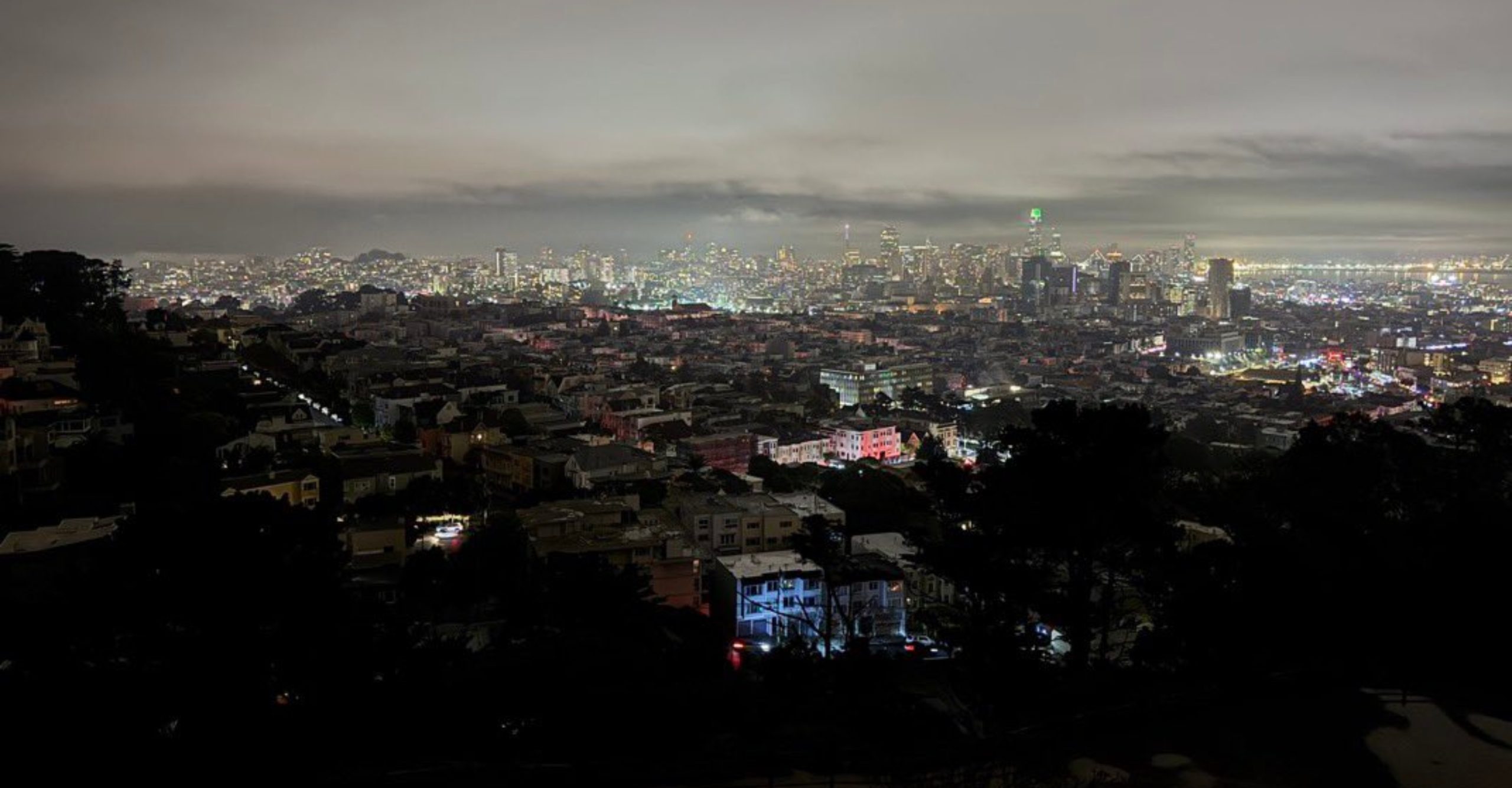
The U.S. city of San Francisco was plunged into darkness Saturday night after a power outage left about 130,000 customers without electricity, although the utility company said service was restored to most users within hours.
Pacific Gas & Electric Company (PG&E) said in a statement posted on X that nearly 90,000 homes had their power restored by 9:00 p.m. local time (05:00 GMT on Sunday), while the remaining 40,000 customers were expected to have service restored overnight.
Large areas of the city, a major technology hub with a population of around 800,000, were affected by the blackout, which disrupted public transportation and left traffic lights out of service during the busy weekend before Christmas, a crucial period for retail businesses.
“I know it’s been a difficult day,” San Francisco Mayor Daniel Lurie said in a video posted on social media from the city’s emergency operations center. “There has been progress, but for those still without power, we want to make sure they are safe and checking in on their neighbors,” he added.
Lurie said police officers and firefighters advised residents to stay home as much as possible. He also noted that officers and traffic inspectors were deployed to manage intersections where traffic lights were not functioning.
The mayor confirmed that the outage was caused by a fire at an electrical substation. Parts of the city were also covered in fog, further complicating conditions during the incident.
As a result of the blackout, many businesses were forced to close despite it being the weekend before Christmas. The sudden drop in shopper traffic ahead of the holiday is “devastating” for retailers, the manager of home goods store Black & Gold told the San Francisco Chronicle.
International
Cristina Kirchner recovering after appendicitis surgery in Buenos Aires

Former Argentine President Cristina Kirchner underwent surgery on Saturday after being diagnosed with appendicitis and is recovering “without complications,” according to a medical report released by the Otamendi Sanatorium.
Kirchner was admitted to the Buenos Aires medical center on Saturday after experiencing abdominal pain. Doctors performed a laparoscopic procedure that confirmed a diagnosis of “appendicitis with localized peritonitis,” the statement said, adding that her post-operative recovery has been progressing without complications.
The former president was transferred to the clinic with judicial authorization from her apartment in Buenos Aires, where she is serving a six-year sentence under house arrest for corruption.
International
Argentina detects first local cases of Influenza A (H3N2) Subclade K

Argentina’s National Administration of Laboratories and Health Institutes (ANLIS) “Dr. Carlos G. Malbrán” has confirmed the detection of three cases of influenza A (H3N2) corresponding to subclade K in the country. These are the first locally recorded cases of this variant, which has become predominant in several countries in the Northern Hemisphere in recent months and is associated with higher transmissibility.
The cases were identified through the National Network of Laboratories and Sentinel Units and confirmed by the National Reference Laboratory of INEI-ANLIS using genomic sequencing techniques. According to health authorities, the cases involve two adolescents from the province of Santa Cruz, detected as part of the Ambulatory Monitoring Strategy for Acute Respiratory Infections, and a child who had been hospitalized in the Autonomous City of Buenos Aires.
In all three cases, patients experienced mild illness and recovered without complications. Officials did not specify whether any of the affected individuals had a recent travel history.
The jurisdictions involved have already launched the corresponding epidemiological investigations and are responsible for ensuring timely medical care for the detected cases. According to the latest integrated surveillance report, the circulation of influenza and other respiratory viruses in Argentina remains within expected levels for this time of year.
-
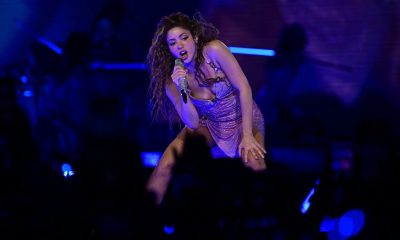
 International3 days ago
International3 days agoShakira’s El Salvador concerts sell out in hours, fans demand more dates
-

 International2 days ago
International2 days agoPentagon confirms Trump pick for SouthCom as U.S. military pressure grows
-

 International5 days ago
International5 days agoRubio rules out 2028 presidential bid if Vance runs
-
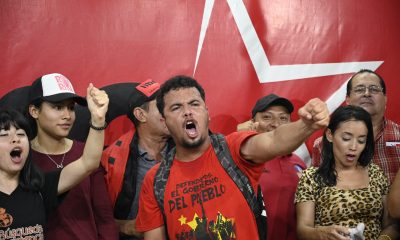
 Central America5 days ago
Central America5 days agoArrests and clashes in Tegucigalpa as vote count continues after Honduras election
-

 International3 days ago
International3 days agoTrump moves to reclassify marijuana as less dangerous substance
-

 International2 days ago
International2 days agoArgentina detects first local cases of Influenza A (H3N2) Subclade K
-

 International5 days ago
International5 days agoAuthorities search for armed and dangerous suspect in fatal Brown University attack
-
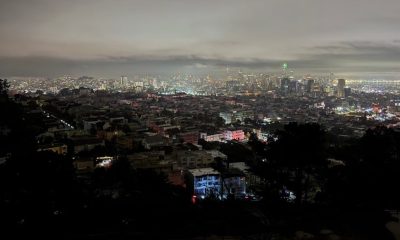
 International23 hours ago
International23 hours agoFire at substation triggers major blackout in San Francisco
-

 International23 hours ago
International23 hours agoCristina Kirchner recovering after appendicitis surgery in Buenos Aires



























